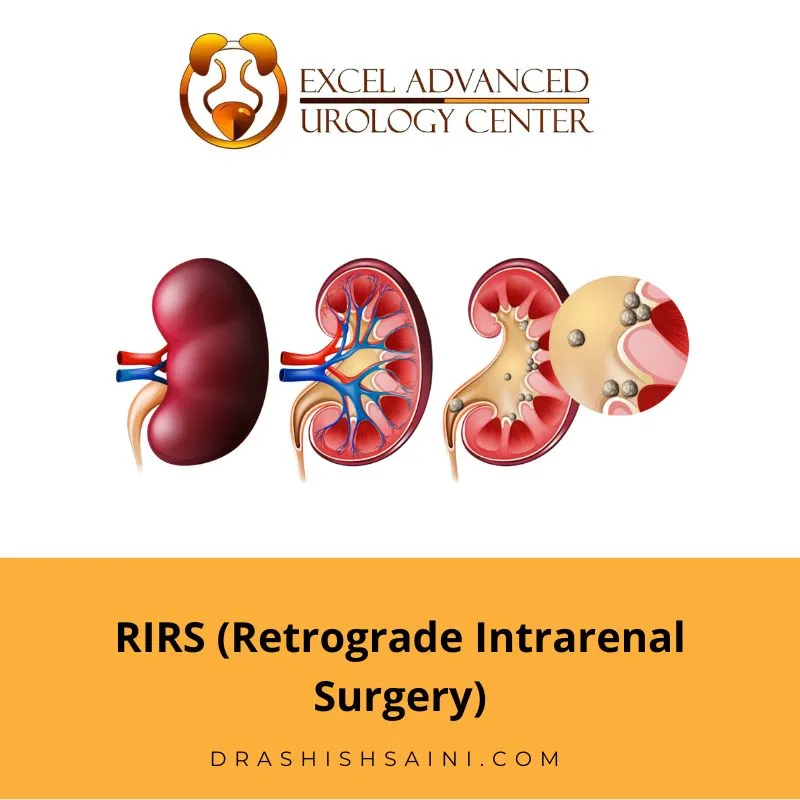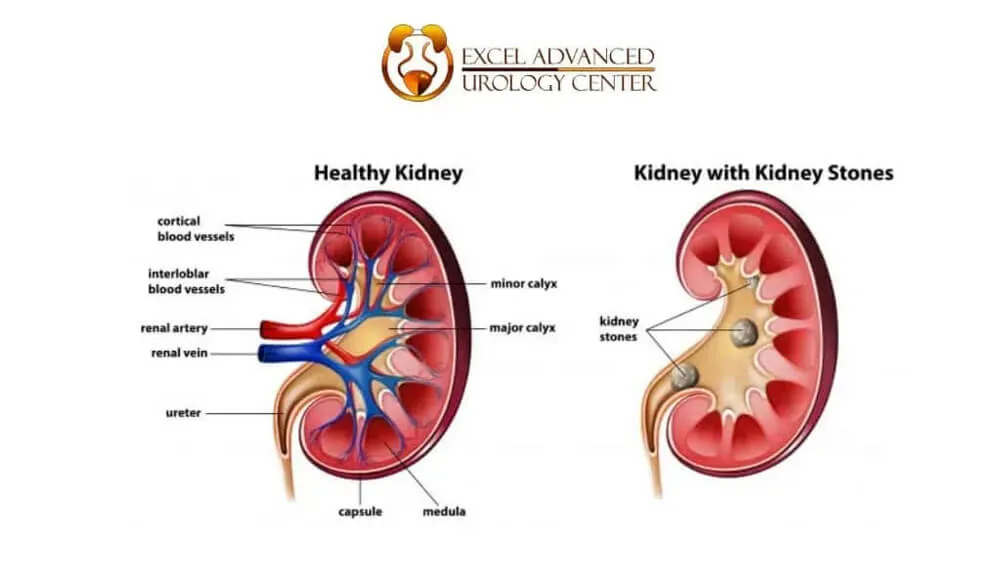
Dr. Ashish Saini, the Best Urologist and Sexologist in Delhi NCR.
Dr Ashish Saini is the Best Sexologist in Delhi and the best Urologist in Delhi NCR. A Gold Medalist from AIIMS New Delhi, he has to his name various complex Urological and Sexology related surgeries done in large numbers in his 12+ years of experience. He has been awarded several times for his outstanding work done in his journey till now. Dr Ashish Saini did his MBBS from India’s Prestigious medical college – King George Medical College (KGMC) Lucknow. Post MBBS completion, he completed his M. Ch in Urology from India’s Best Medical College – All India Medical Sciences (AIIMS) New Delhi. Dr Ashish Saini has successfully completed 5200+ Urology and Sexology Surgeries. His patients are from all over the country and the world. Dr Ashish Saini is clearly the Best Sexologist and Urologist in Delhi, NCR and India because of his vast and versatile experience in the field of Urology and Sexology.Why choose Excel Advanced Urology for RIRS?
Excel Advanced Urology Centre has a specialized team led by senior urologist Dr Ashish Saini who has performed numerous RIRS surgeries that significantly enhance the success rates and safety of the procedure.What is RIRS?

Retrograde Intrarenal Surgery (RIRS) is a minimally invasive surgical procedure used to treat kidney stones. This treatment helps relieve the pain in the kidney after breaking down the stones. In this procedure, a thin and flexible tube called a fiberoptic endoscope is used to access and treat the stones inside the kidney or the upper urinary tract.
The tube is inserted into the ureter, which is the region of the kidney that collects urine, and it aids in the viewing of various kidney sections. The tiny laser fibre (thulium fibre laser) is then sent through the scope, which breaks down stones into extremely small particles that may be washed away with urine or saline irrigation.
What Our Heroes say about us
Choose RIRS to treat Kidney stones in Delhi.
Schedule a Consultation today at Excel Advanced Urology Centre. Schedule ConsultationExplore cutting-edge solutions for RIRS at the renowned Excel Advanced Urology Centre in Delhi
Take the first step towards better health by scheduling a consultation below Schedule ConsultationProcedure
- Initial Examination At your consultation visit, we will check your kidney function and a screening ultrasound to see the number of stones and size. During the comprehensive urology examination, we will measure the density of your stones to ensure the best laser setting to remove them. We will also make a roadmap of the approach of your kidneys (map of the KUB) and check the overall health of your kidneys.
- Before the Procedure It’s important to be aware of any potential risks and side effects and to discuss these with your RIRS provider. You should also have realistic expectations of the outcome and be prepared to follow your doctor’s instructions regarding post-operative care and follow-up visits.
- Day of the Procedure
RIRS is a 2-step process:
- Step 1: Dr. Ashish Kumar Saini uses the digital chip on tip ureteroscope to access the ureter calibre (ureter is a pipe which connects the kidney to the bladder) If the ureter is tight Dr Saini would like to put a double J stent and defer the RIRS for 2 weeks.
- Step 2: If the ureter is of good calibre then Dr. Ashish Kumar Saini will pass a ureteral access sheath in the ureter and introduce a flexible chip on tip ureteroscope to access the kidney and stone. Once all the stones are visualized a 200-micron laser fibre is introduced through the ureteroscope to reach the stone and High power super pulse TFL laser 60 W is used to powder the stone into dust. Once all the stone is cleared a DJ stent is placed and an indwelling catheter is placed after the procedure
Yes, if the surgery is done under regional anesthesia patients can see the procedure on screen.
After the ProcedureAfter your RIRS procedure, you’ll be taken to our recovery room, where your post-operative instructions are explained in detail. Dr. Ashish Kumar Saini will examine you and then you will be shifted to your room for overnight stay. You’ll need to have someone with you to assist you in getting home following your RIRS surgery. When you arrive home, you should plan on taking 2-3 days off with good sleep for 6- 8 hours, during which a lot of healing will occur. You may experience mild discomfort (blood in urine , burning, pinkish urine. Pain in back and below navels) during this time, and we recommend you follow the post op instructions as much as possible to aid in your recovery. 10 days after your RIRS surgery, you’ll return to the centre for a postoperative examination of 15 minutes to see how your healing is progressing. Dr. Ashish Kumar Saini will assess your progress, answer any follow-up questions you might have, and review the use of medication and advice for the removal of DJ stents (usually after 2 weeks of RIRS). Patients can return to normal daily activities within 1 week of their procedure.

Advantages of RIRS
- Minimally Invasive: RIRS is a minimally invasive surgical technique, requiring no incisions. Instead, a flexible ureteroscope is passed through the natural urinary passages, minimizing trauma to surrounding tissues and reducing recovery time.
- High Success Rates: RIRS has shown high success rates in treating smaller to medium-sized kidney stones, particularly those located in the renal pelvis or calyces. The procedure effectively allows the urologist to visualize and treat stones in the kidney.
- Versatility: RIRS is versatile and can be used to treat various types of kidney stones, including those that may be challenging to reach with other methods. It is suitable for both simple and complex stones.
- Short Recovery Time: Compared to more invasive procedures like percutaneous nephrolithotomy (PNL), RIRS typically involves a shorter recovery time. Patients often experience less pain and can resume normal activities sooner after the procedure.
- Reduced Pain and Discomfort: Since RIRS is a minimally invasive procedure, it generally causes less pain and discomfort than traditional open surgeries. Most patients can manage postoperative pain with mild pain medications.
- Lower Infection Risk: The risk of infection is relatively low with RIRS. Antibiotics may be prescribed before or after the procedure to further reduce the risk of infection.
- Outpatient Procedure: In many cases, RIRS can be performed on an outpatient basis, allowing patients to go home the same day as the procedure. This can contribute to increased convenience and decreased healthcare costs.
- Lower Risk of Scarring: RIRS avoids the need for external incisions, minimizing the risk of visible scarring. This can be particularly important for patients concerned about cosmetic outcomes.
- Applicability for Special Populations: RIRS is suitable for a wide range of patients, including those who may not be candidates for more invasive procedures. It can be used in pregnant women, elderly individuals, and those with specific health conditions.
Side effects of RIRS
Retrograde Intrarenal Surgery (RIRS) is generally considered a safe procedure, but like any medical intervention, it may be associated with certain side effects and potential complications. It’s important to note that the occurrence of these side effects can vary from patient to patient, and many individuals may not experience any adverse effects. Some potential side effects and complications of RIRS include.- Bleeding: Mild bleeding is common during and after RIRS. Most cases of bleeding are minimal and resolve on their own, but in some instances, additional intervention may be necessary.
- Infection: While the risk of infection is relatively low, as with any surgical procedure, there is a possibility of developing a urinary tract infection. Antibiotics are often prescribed before or after the procedure to minimize this risk.
- Pain: Some discomfort or pain in the urinary tract is normal after RIRS. Pain is usually managed with pain medications prescribed by the healthcare provider.
- Ureteral Injury: There is a small risk of injury to the ureter during the insertion of the ureteroscope. Skilled surgeons take precautions to minimize this risk, but it can occur in rare cases.
- Residual Stones: Despite the effectiveness of RIRS, there is a chance that small stone fragments may be left behind. These fragments may pass spontaneously or require additional intervention.
- Urinary Stricture: In rare cases, scarring or narrowing of the ureter (urinary stricture) may occur as a result of the procedure, leading to potential blockage and requiring further treatment.
- Instrumentation Trauma: The use of medical instruments during RIRS may cause trauma to the surrounding tissues, potentially leading to irritation or inflammation.
- Reaction to Anesthesia: As with any surgical procedure, there is a risk of adverse reactions to anesthesia. This risk is typically assessed by the anesthesiologist before the surgery.
- Prolonged Recovery: While RIRS generally involves a shorter recovery time compared to more invasive procedures, some patients may experience a longer recovery period, particularly if complications arise.
Is RIRS Safe
Retrograde Intrarenal Surgery (RIRS) is generally considered a safe and effective procedure for the treatment of kidney stones. However, like any medical intervention, it carries potential risks and complications. The safety of RIRS depends on various factors, including the patient’s overall health, the characteristics of the kidney stones, and the skill and experience of the surgical team.- Effectiveness: RIRS is often effective in treating smaller to medium-sized kidney stones, particularly those located in the renal pelvis or calyces. The procedure allows the urologist to access and remove or fragment stones using a flexible ureteroscope.
- Minimally Invasive: RIRS is a minimally invasive procedure, which means it is associated with fewer complications and a shorter recovery period compared to more invasive surgeries like open surgery or percutaneous nephrolithotomy (PNL).
- Anesthesia Risks: Like any surgical procedure, RIRS involves the use of anesthesia. Anesthesia-related risks will depend on the patient’s health status, and the anesthesiologist will assess and manage these risks.
- Infection Risk: While infection is a potential risk with any surgery, RIRS is generally associated with a low risk of infection. Antibiotics may be prescribed before or after the procedure to minimize this risk.
- Bleeding: Some degree of bleeding may occur during or after RIRS. While significant bleeding is uncommon, patients may experience minor bleeding that usually resolves on its own or can be managed by the medical team.
- Ureteral Injury: There is a small risk of injury to the ureter during the insertion of the ureteroscope. Experienced surgeons take precautions to minimize this risk.
- Residual Stone Fragments: In some cases, small fragments of the stone may be left behind after RIRS. These fragments may pass on their own or require additional interventions.
Explore cutting-edge solutions for RIRS at the renowned Excel Advanced Urology Centre in Delhi
Take the first step towards better health by scheduling a consultation below Schedule Consultation
When RIRS is needed?
- Stone Size and Location: RIRS is often used for the treatment of smaller to medium-sized kidney stones, particularly those located in the renal pelvis or calyces. The procedure is effective for stones that may be challenging to reach with other methods.
- Ineffectiveness of Conservative Measures: When conservative measures such as increased fluid intake, medications, or lifestyle modifications fail to alleviate symptoms or facilitate the passage of kidney stones, RIRS may be considered as an intervention.
- Persistent or Recurrent Stones: If a person has a history of recurrent kidney stones or experiences persistent stones that do not pass spontaneously, RIRS may be recommended to remove or break up the stones.
- Obstruction and Hydronephrosis: Kidney stones causing obstruction of the urinary tract, leading to symptoms such as hydronephrosis (swelling of the kidney), may require intervention. RIRS can help alleviate the obstruction and manage related symptoms.
- Failure of Other Treatment Modalities: If other non-invasive treatments such as shock wave lithotripsy (SWL) or ureteroscopy have been attempted but are not successful or are deemed inappropriate for the specific case, RIRS may be considered.
- Large or Complex Stones: While RIRS is generally suitable for smaller stones, advancements in technology and surgical techniques have expanded its applicability to larger or more complex stones in certain cases.
- Patients Unfit for Other Procedures: Some patients may not be suitable candidates for other surgical procedures like percutaneous nephrolithotomy (PNL) or extracorporeal shock wave lithotripsy (ESWL) due to health concerns or anatomical factors, making RIRS a preferred option.
What would disqualify me from RIRS Surgery?
- Stone Size and Location: RIRS may not be suitable for very large stones or stones located in certain parts of the kidney that are challenging to access.
- Anatomical Abnormalities: If you have certain anatomical abnormalities or variations in the urinary tract, it might affect the feasibility and safety of the procedure.
- Medical Conditions: Certain medical conditions such as bleeding disorders, severe heart or lung disease, or active urinary tract infections might be contraindications for RIRS.
- Pregnancy: RIRS is generally avoided during pregnancy due to potential risks to the fetus.
- Previous Surgeries: If you’ve had extensive previous abdominal or pelvic surgeries, the scar tissue may complicate the procedure or make it less effective.
- Allergies or Sensitivities: Allergies to contrast agents or other substances used during the procedure may be a concern.
- Inability to Cooperate: Patients need to be able to cooperate during the procedure, which involves being under anesthesia but responsive.
- General Health Status: Overall health, including factors such as poor general health, advanced age, or significant comorbidities, may affect the suitability of RIRS.
How much does the RIRS cost in Delhi?
The cost of RIRS surgery is determined by various factors. However this treatment is reasonable and easily accessible to the general public. The cost of RIRS surgery in India may vary from Rs. 90,000 to above Rs. 1 lakh depending on the characteristics of the amount/size of stones, etc.
Dr. Ashish Saini
Meet your Urologist
Dr Ashish Saini is an exceptional and highly skilled genitourinary surgeon(urologist) whose capabilities in the operating room are truly commendable. Dr Ashish Saini did his MBBS, MS from King George Medical College (KGMC), and he completed his M.Ch in Urology from All India Medical Sciences (AIIMS) New Delhi. Known for his meticulous attention to detail, Dr Ashish Saini with 15 + years of experience approaches each surgical case with a thorough understanding of the patient’s unique needs and tailors his approach accordingly. Dr Ashish Saini has completed 21000+ Urology and Sexology Surgeries. Beyond his surgical skills, Dr Saini fosters a sense of trust and reassurance among his patients. His clear communication, both pre-and post-surgery, helps the patient feel informed and at ease throughout their medical journey. Dr Ashish Saini’s commitment to patient-centred care contributes to a positive overall experience for those under his supervision.What Our Heroes say about us
FAQ’s
Questions asked by new visitors




